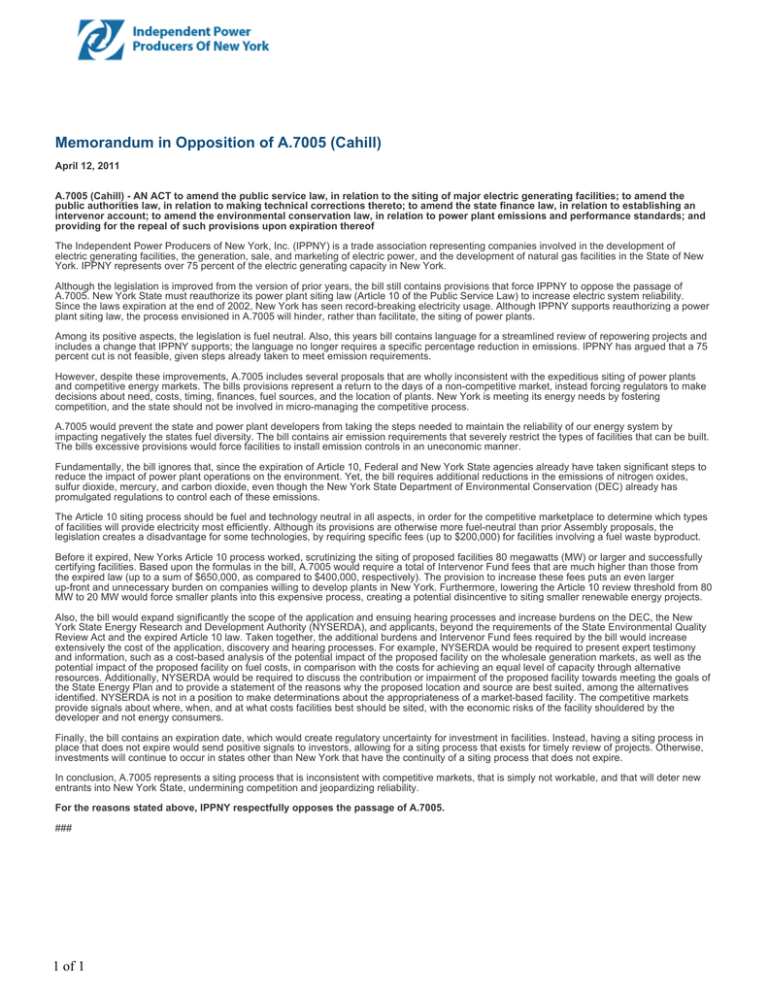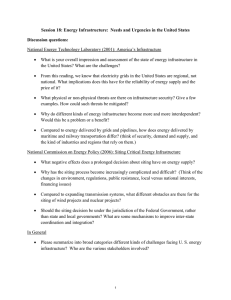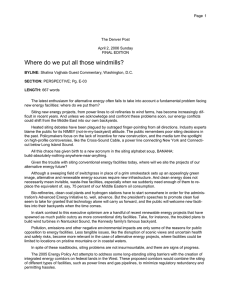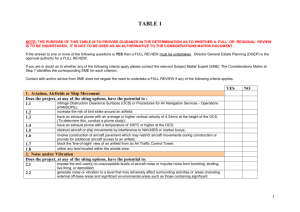Memorandum in Opposition of A.7005 (Cahill)
advertisement

Memorandum in Opposition of A.7005 (Cahill) April 12, 2011 A.7005 (Cahill) - AN ACT to amend the public service law, in relation to the siting of major electric generating facilities; to amend the public authorities law, in relation to making technical corrections thereto; to amend the state finance law, in relation to establishing an intervenor account; to amend the environmental conservation law, in relation to power plant emissions and performance standards; and providing for the repeal of such provisions upon expiration thereof The Independent Power Producers of New York, Inc. (IPPNY) is a trade association representing companies involved in the development of electric generating facilities, the generation, sale, and marketing of electric power, and the development of natural gas facilities in the State of New York. IPPNY represents over 75 percent of the electric generating capacity in New York. Although the legislation is improved from the version of prior years, the bill still contains provisions that force IPPNY to oppose the passage of A.7005. New York State must reauthorize its power plant siting law (Article 10 of the Public Service Law) to increase electric system reliability. Since the laws expiration at the end of 2002, New York has seen record-breaking electricity usage. Although IPPNY supports reauthorizing a power plant siting law, the process envisioned in A.7005 will hinder, rather than facilitate, the siting of power plants. Among its positive aspects, the legislation is fuel neutral. Also, this years bill contains language for a streamlined review of repowering projects and includes a change that IPPNY supports; the language no longer requires a specific percentage reduction in emissions. IPPNY has argued that a 75 percent cut is not feasible, given steps already taken to meet emission requirements. However, despite these improvements, A.7005 includes several proposals that are wholly inconsistent with the expeditious siting of power plants and competitive energy markets. The bills provisions represent a return to the days of a non-competitive market, instead forcing regulators to make decisions about need, costs, timing, finances, fuel sources, and the location of plants. New York is meeting its energy needs by fostering competition, and the state should not be involved in micro-managing the competitive process. A.7005 would prevent the state and power plant developers from taking the steps needed to maintain the reliability of our energy system by impacting negatively the states fuel diversity. The bill contains air emission requirements that severely restrict the types of facilities that can be built. The bills excessive provisions would force facilities to install emission controls in an uneconomic manner. Fundamentally, the bill ignores that, since the expiration of Article 10, Federal and New York State agencies already have taken significant steps to reduce the impact of power plant operations on the environment. Yet, the bill requires additional reductions in the emissions of nitrogen oxides, sulfur dioxide, mercury, and carbon dioxide, even though the New York State Department of Environmental Conservation (DEC) already has promulgated regulations to control each of these emissions. The Article 10 siting process should be fuel and technology neutral in all aspects, in order for the competitive marketplace to determine which types of facilities will provide electricity most efficiently. Although its provisions are otherwise more fuel-neutral than prior Assembly proposals, the legislation creates a disadvantage for some technologies, by requiring specific fees (up to $200,000) for facilities involving a fuel waste byproduct. Before it expired, New Yorks Article 10 process worked, scrutinizing the siting of proposed facilities 80 megawatts (MW) or larger and successfully certifying facilities. Based upon the formulas in the bill, A.7005 would require a total of Intervenor Fund fees that are much higher than those from the expired law (up to a sum of $650,000, as compared to $400,000, respectively). The provision to increase these fees puts an even larger up-front and unnecessary burden on companies willing to develop plants in New York. Furthermore, lowering the Article 10 review threshold from 80 MW to 20 MW would force smaller plants into this expensive process, creating a potential disincentive to siting smaller renewable energy projects. Also, the bill would expand significantly the scope of the application and ensuing hearing processes and increase burdens on the DEC, the New York State Energy Research and Development Authority (NYSERDA), and applicants, beyond the requirements of the State Environmental Quality Review Act and the expired Article 10 law. Taken together, the additional burdens and Intervenor Fund fees required by the bill would increase extensively the cost of the application, discovery and hearing processes. For example, NYSERDA would be required to present expert testimony and information, such as a cost-based analysis of the potential impact of the proposed facility on the wholesale generation markets, as well as the potential impact of the proposed facility on fuel costs, in comparison with the costs for achieving an equal level of capacity through alternative resources. Additionally, NYSERDA would be required to discuss the contribution or impairment of the proposed facility towards meeting the goals of the State Energy Plan and to provide a statement of the reasons why the proposed location and source are best suited, among the alternatives identified. NYSERDA is not in a position to make determinations about the appropriateness of a market-based facility. The competitive markets provide signals about where, when, and at what costs facilities best should be sited, with the economic risks of the facility shouldered by the developer and not energy consumers. Finally, the bill contains an expiration date, which would create regulatory uncertainty for investment in facilities. Instead, having a siting process in place that does not expire would send positive signals to investors, allowing for a siting process that exists for timely review of projects. Otherwise, investments will continue to occur in states other than New York that have the continuity of a siting process that does not expire. In conclusion, A.7005 represents a siting process that is inconsistent with competitive markets, that is simply not workable, and that will deter new entrants into New York State, undermining competition and jeopardizing reliability. For the reasons stated above, IPPNY respectfully opposes the passage of A.7005. ### 1 of 1


